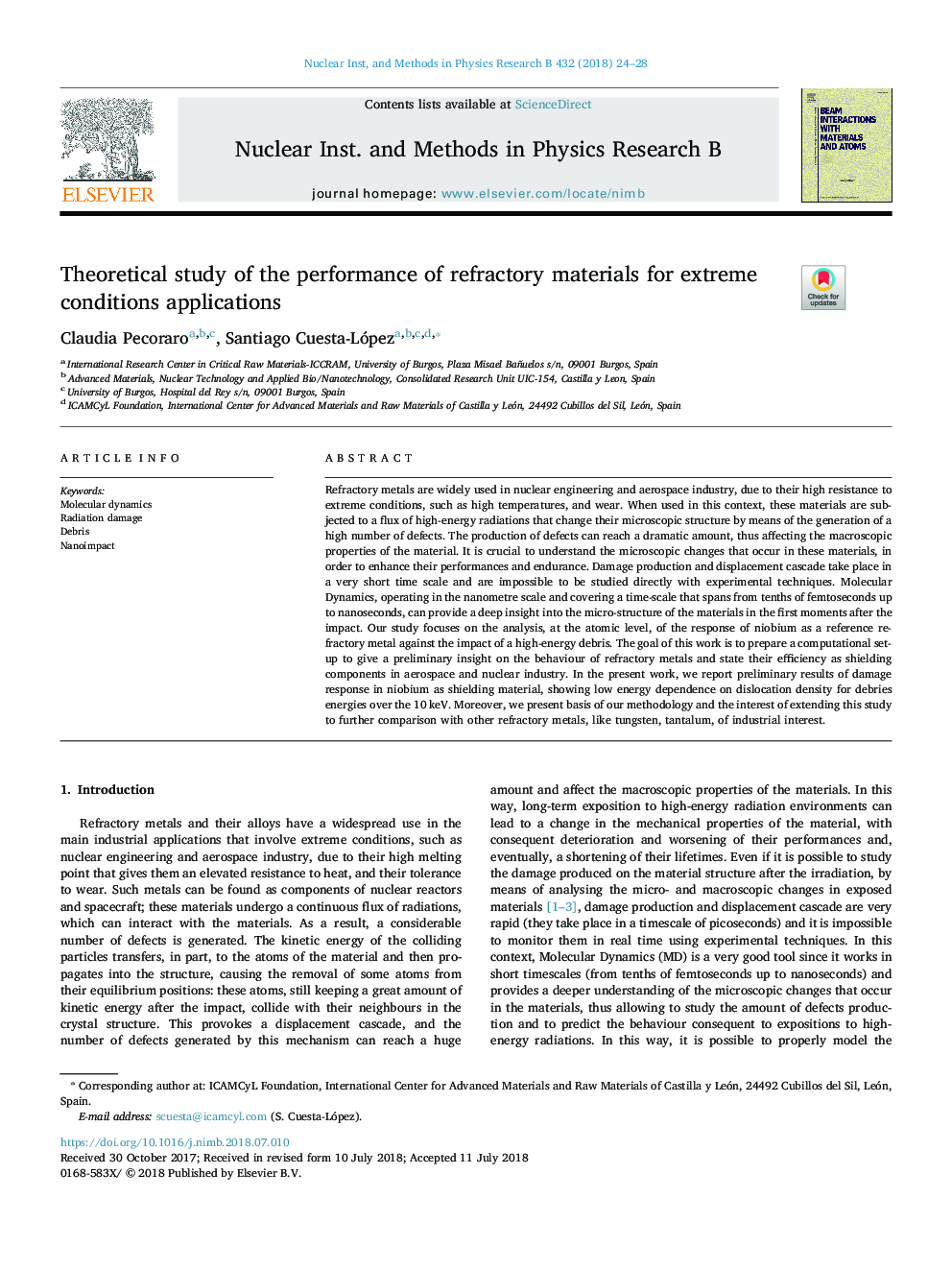| Article ID | Journal | Published Year | Pages | File Type |
|---|---|---|---|---|
| 8039045 | Nuclear Instruments and Methods in Physics Research Section B: Beam Interactions with Materials and Atoms | 2018 | 5 Pages |
Abstract
Refractory metals are widely used in nuclear engineering and aerospace industry, due to their high resistance to extreme conditions, such as high temperatures, and wear. When used in this context, these materials are subjected to a flux of high-energy radiations that change their microscopic structure by means of the generation of a high number of defects. The production of defects can reach a dramatic amount, thus affecting the macroscopic properties of the material. It is crucial to understand the microscopic changes that occur in these materials, in order to enhance their performances and endurance. Damage production and displacement cascade take place in a very short time scale and are impossible to be studied directly with experimental techniques. Molecular Dynamics, operating in the nanometre scale and covering a time-scale that spans from tenths of femtoseconds up to nanoseconds, can provide a deep insight into the micro-structure of the materials in the first moments after the impact. Our study focuses on the analysis, at the atomic level, of the response of niobium as a reference refractory metal against the impact of a high-energy debris. The goal of this work is to prepare a computational set-up to give a preliminary insight on the behaviour of refractory metals and state their efficiency as shielding components in aerospace and nuclear industry. In the present work, we report preliminary results of damage response in niobium as shielding material, showing low energy dependence on dislocation density for debries energies over the 10â¯keV. Moreover, we present basis of our methodology and the interest of extending this study to further comparison with other refractory metals, like tungsten, tantalum, of industrial interest.
Related Topics
Physical Sciences and Engineering
Materials Science
Surfaces, Coatings and Films
Authors
Claudia Pecoraro, Santiago Cuesta-López,
